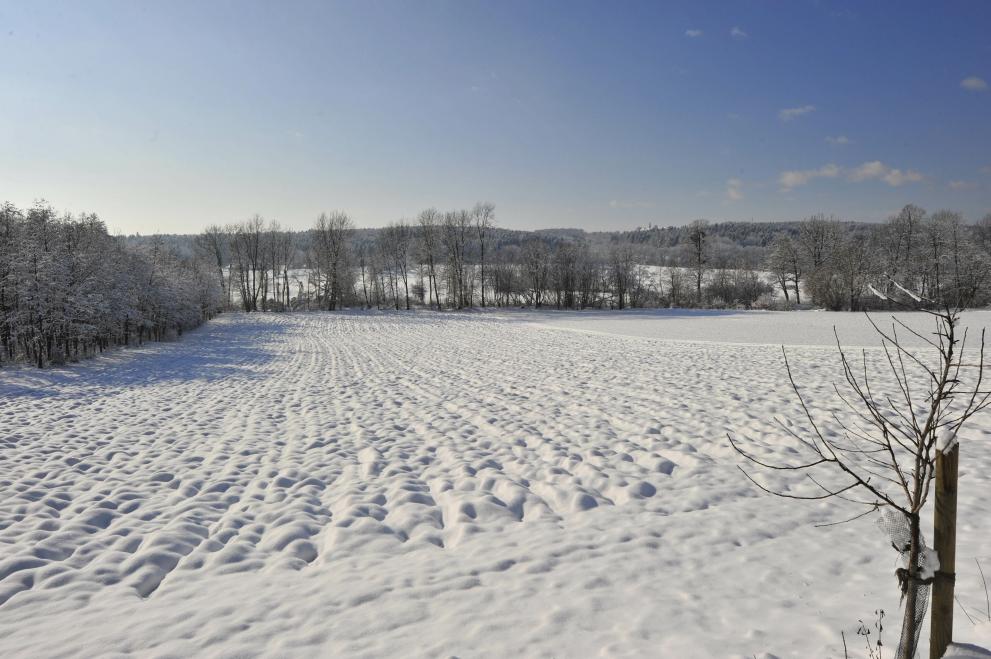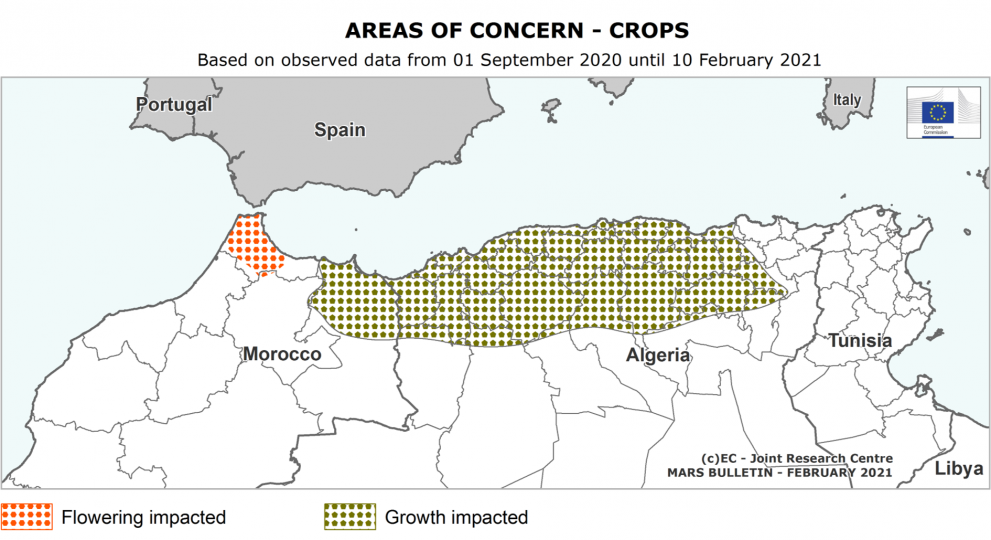
The February issue of the JRC MARS Bulletin - Crop monitoring in Europe - was published today, alongside the February edition of the Bulletin on North Africa, in the JRC MARS Bulletin global outlook series.
Exceptionally low temperatures in several EU regions
According to the crop monitoring Bulletin for Europe, the weather in Europe has been marked by three cold spells this year.
The third of these, which occurred between 7 and 15 February, was the most pronounced and affected the largest area: first in northern Europe, northern Poland, Germany, the Benelux countries and northern France, and then, for one day only, in Hungary, south-eastern Europe and Turkey.
In several regions, minimum temperatures were among the lowest of the past 50 years.
Nevertheless, negative impacts on winter crops are expected to have been limited, as most of the areas affected were protected by snow cover during the coldest periods.
Some frost damage is expected to have occurred in western Germany, eastern France, Hungary, south-eastern Europe and Turkey, in areas without significant snow cover and where frost tolerance was poorly developed due to the prevailing warmer-than-usual conditions preceding the cold spell.

Continued warm and wet conditions in south-eastern Europe
In contrast, considering the review period as a whole (1 January – 15 February), in most parts of southern Europe average temperatures were around 2 °C above the long-term average.
Rainfall was above average in most parts of Europe, with the highest anomalies in Italy, the Balkan region, Romania, Bulgaria and Greece, where abundant rainfall (already reported in the January issue of the Bulletin) continued. Well-above-average rainfall was also observed in eastern Spain and parts of Ukraine.
Crops doing fairly well in North Africa, except for Algeria
In North Africa, the winter cereal season has been marked by exceptionally warm conditions in most of the region and a severe rainfall deficit in central and western Maghreb.
Compared to an average season, the sowing campaign took place on time in Tunisia, western Libya and Egypt, but was delayed by 2-3 weeks in Morocco and Algeria.
Dry conditions persisted in most of central and western Algeria and in north-eastern Morocco.
Towards the end of the review period, exceptionally high temperatures in Algeria and western Libya negatively affected crops during flowering.
At country level, yield expectations for winter cereals are average to above average in Morocco, Tunisia, Libya and Egypt, but well below the 5-year average in Algeria.

Further information
JRC MARS (Monitoring Agricultural Resources) Bulletins
The latest information about global agricultural production hotspots for countries with food insecurity risks is available on the JRC’s ASAP (Anomaly hot Spots of Agricultural Production) site.
For email notifications of new Bulletins, please subscribe through the JRC's Agri4Cast ToolBox
The March 2021 issue of the Bulletin will be published on 15 March.
Related Content
JRC MARS (Monitoring Agricultural Resources) Bulletins
Details
- Publication date
- 22 February 2021
